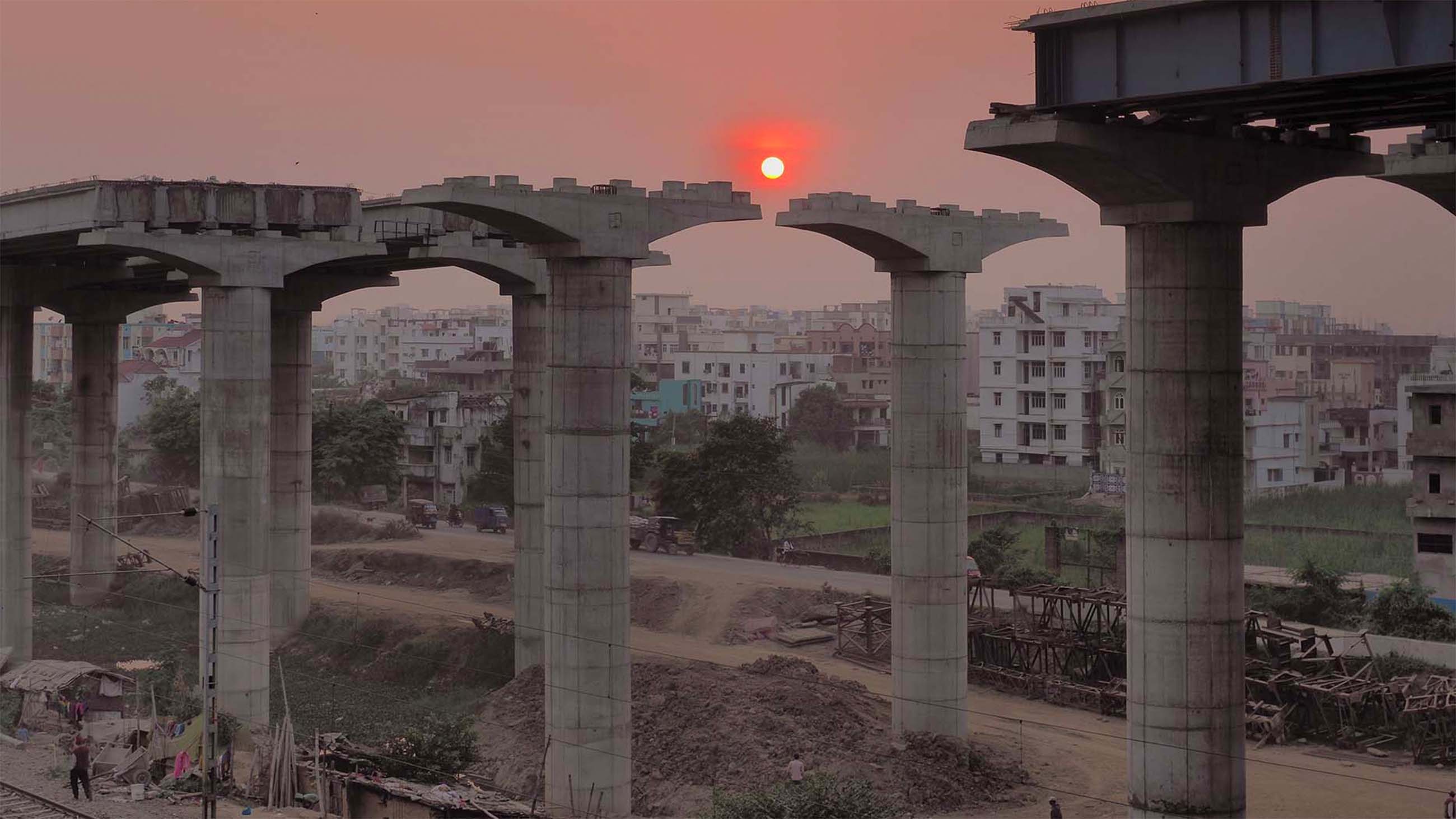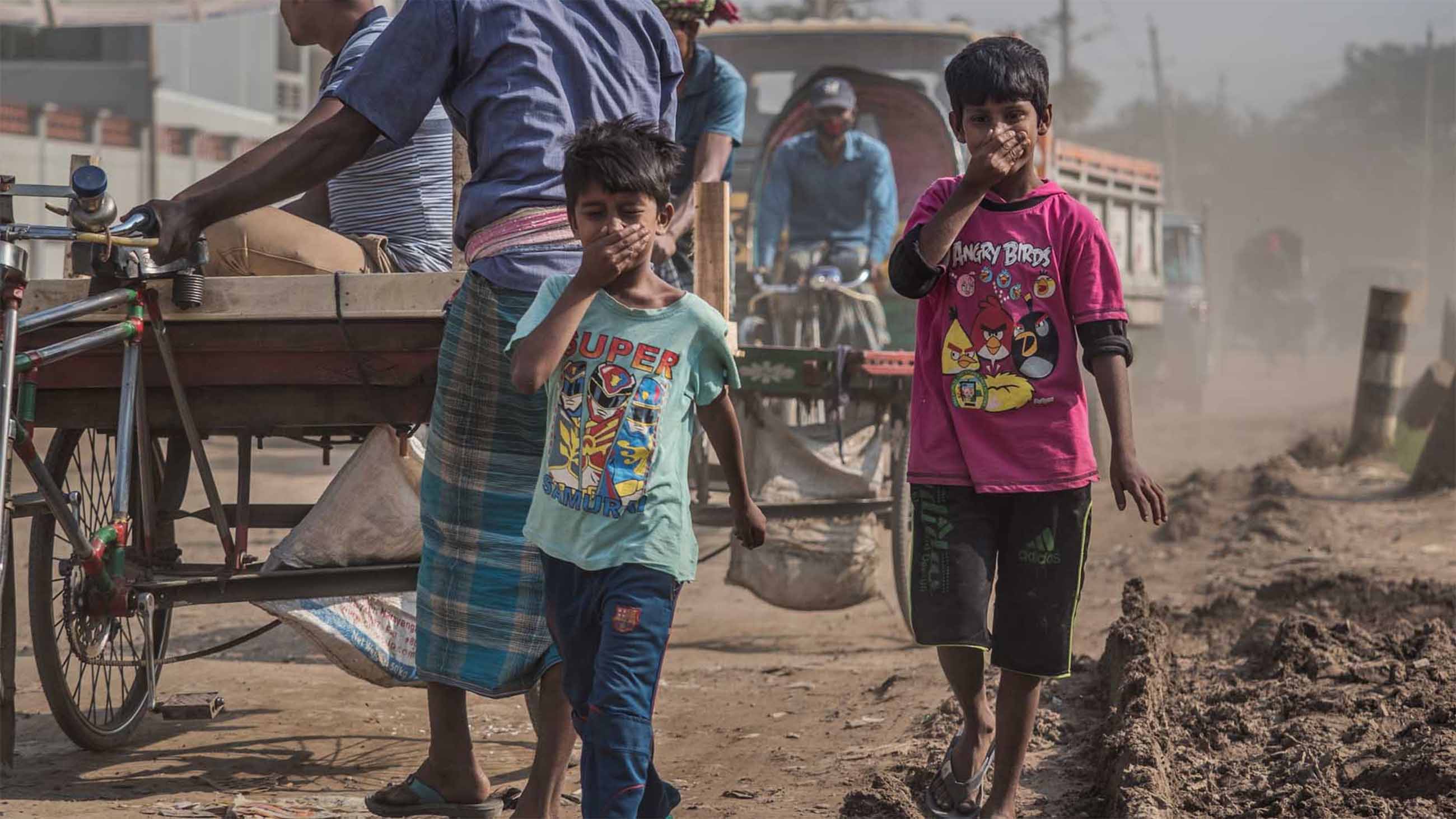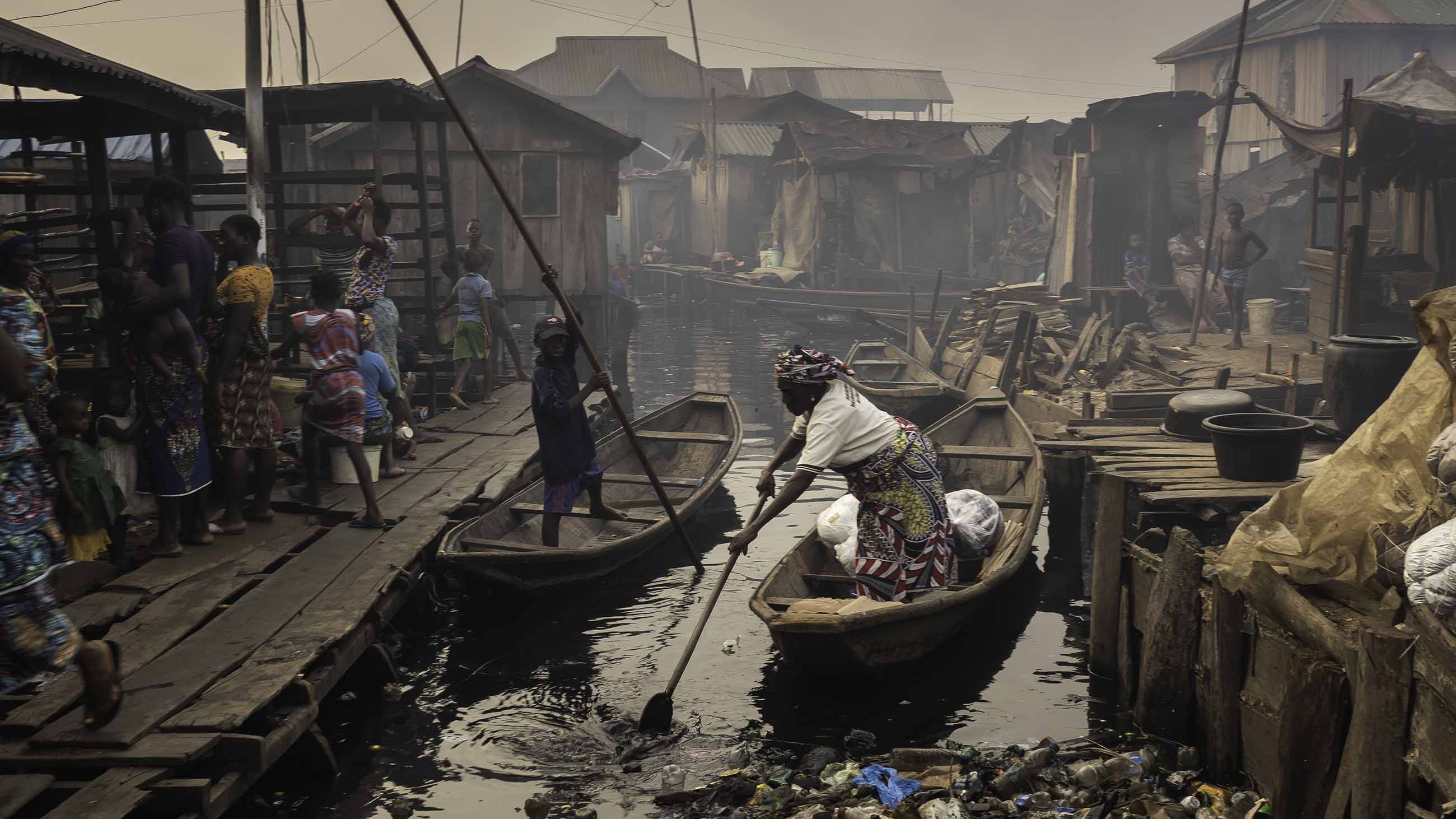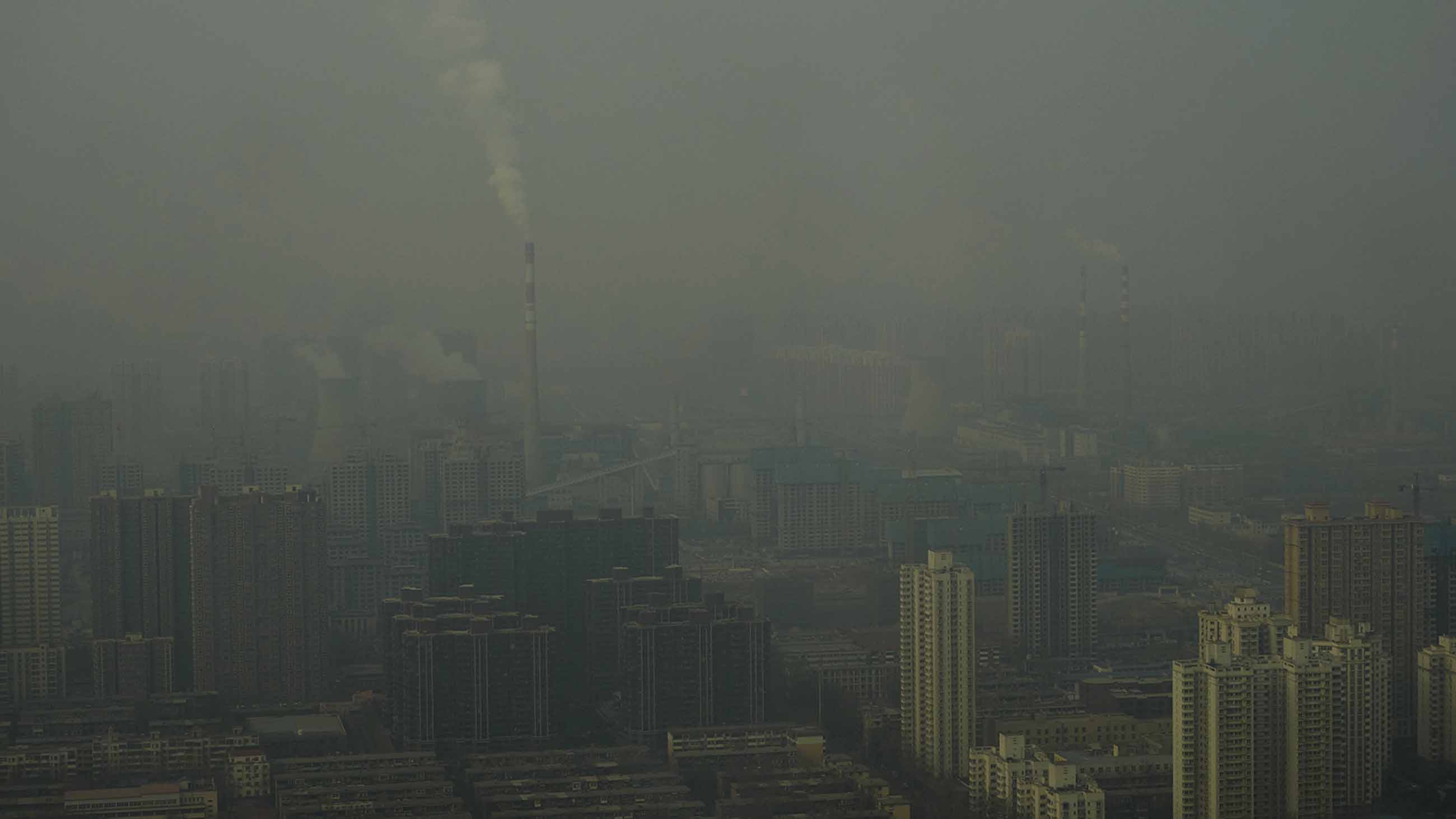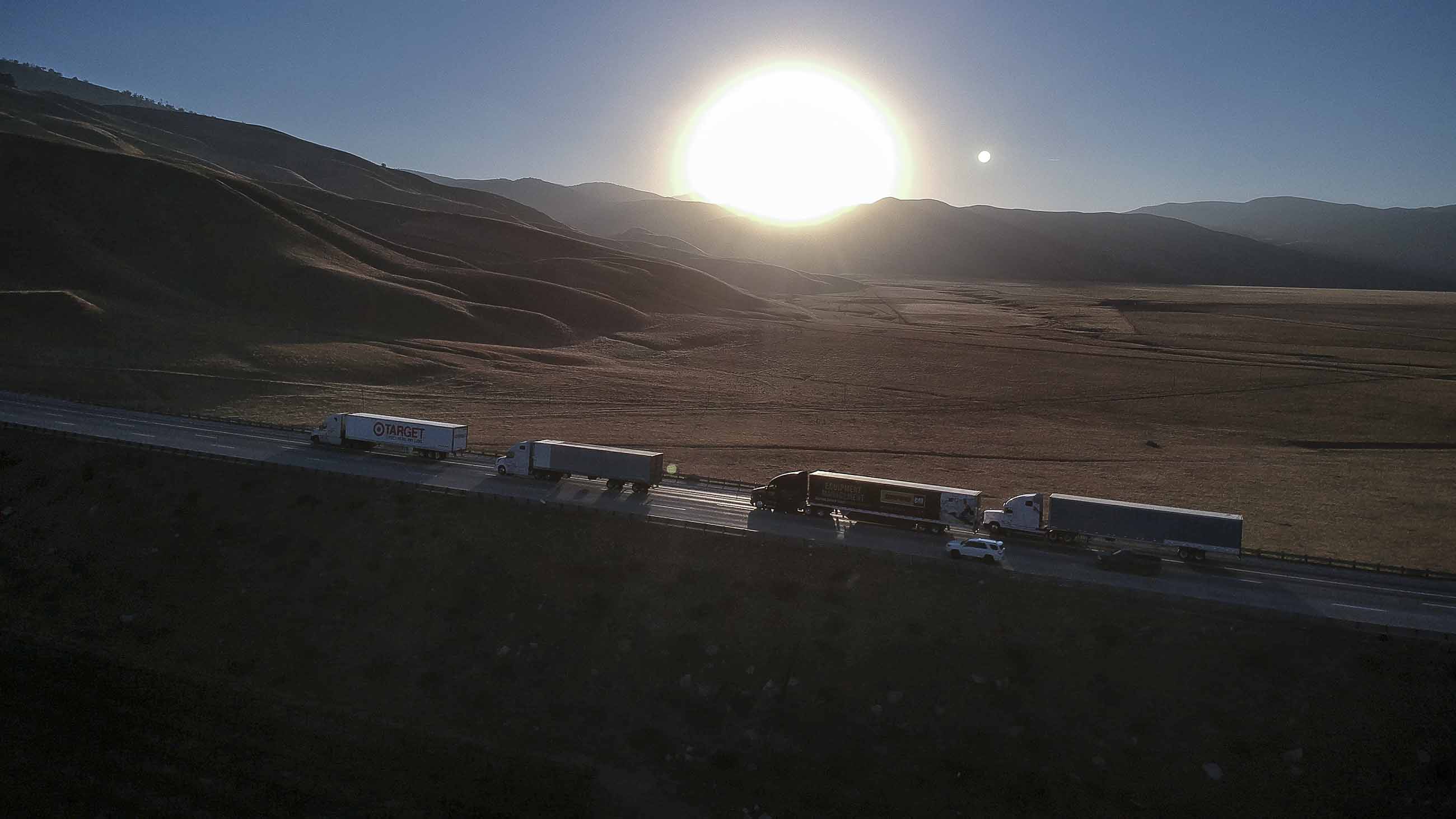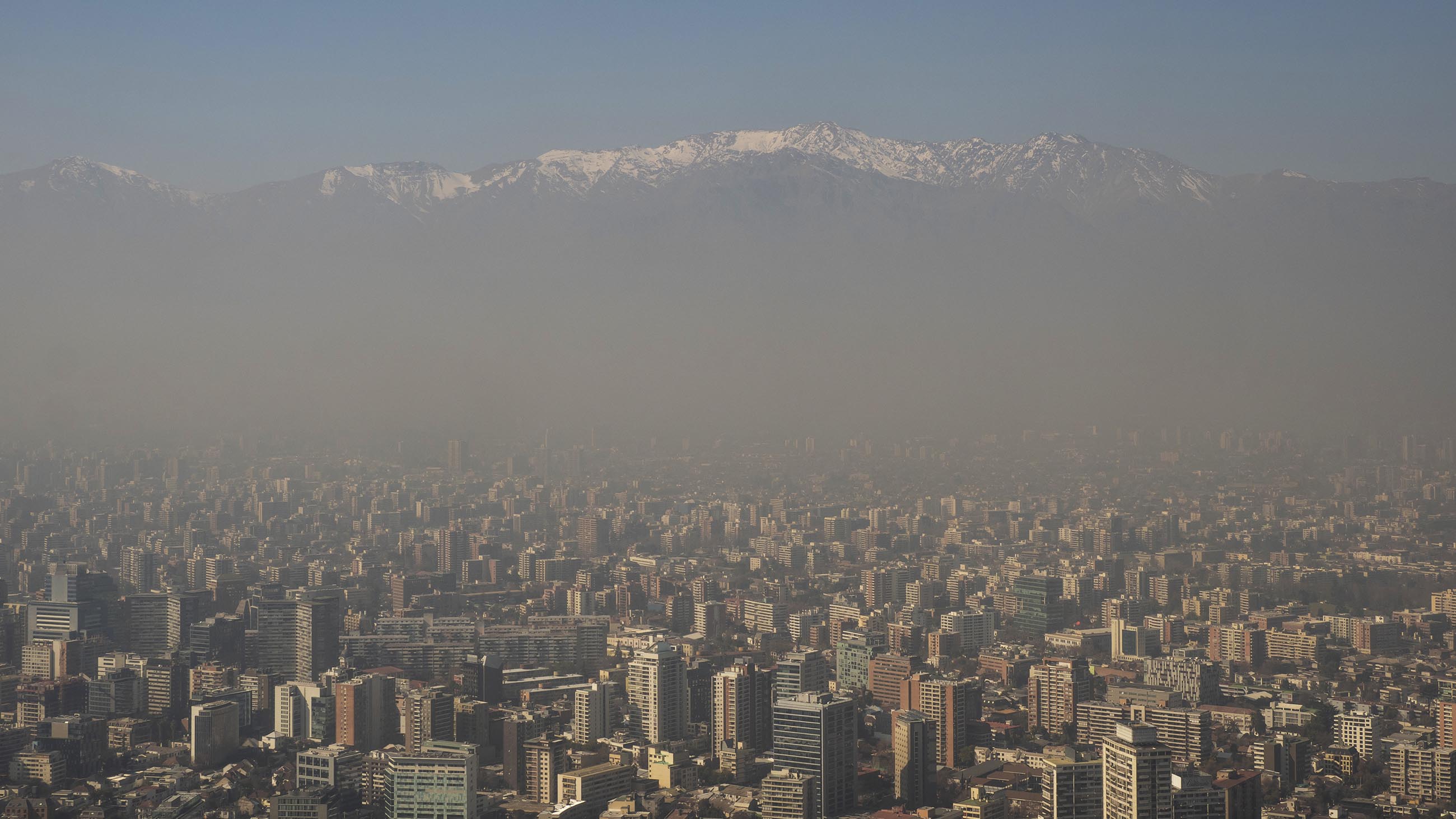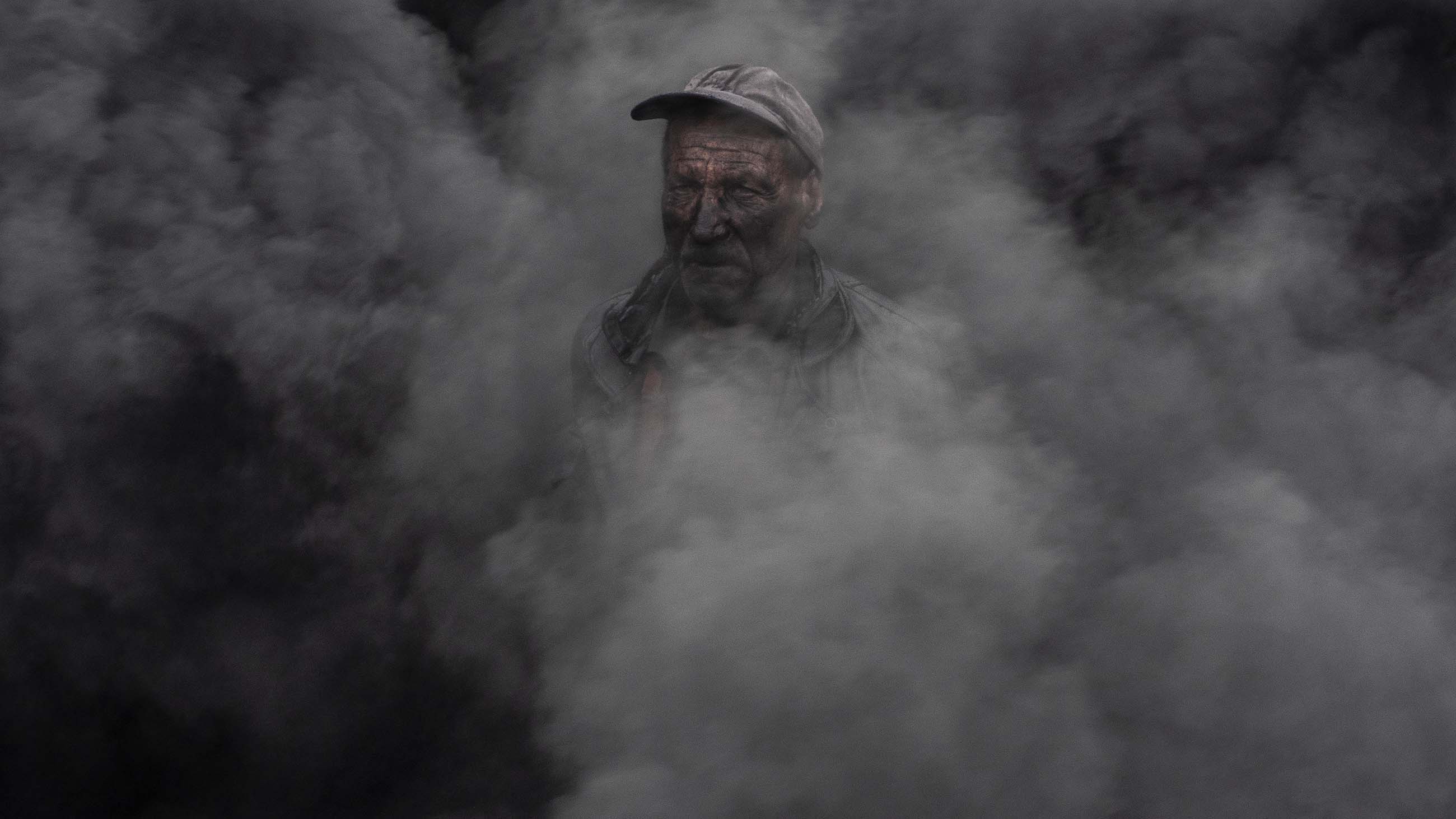Emanating from smokestacks, vehicle engines, construction projects, and fires large and small, airborne pollution – sometimes smaller than the width of a human hair, and very often the product of human activity – is not just contributing to climate change. It is a leading driver of heart disease and stroke, lung cancer, and respiratory infections the world over. Exposure to such pollution, the most deadly of which scientists call PM2.5, is the sixth highest risk factor for death around the world, claiming more than 4 million lives annually, according to recent global morbidity data. Add in household pollutants from indoor cooking fires and other combustion sources, and the tally approaches 7 million lives lost each year.
Undark and the Pulitzer Center on Crisis Reporting visited seven countries on five continents, rich and poor, north and south, to examine the impacts of this sort of air pollution on the lives of everyday people, and to uncover what’s being done — or not — to address this ambient and ultimately controllable killer. As it stands, developing nations bear the brunt of the problem, but particulate pollution doesn’t discriminate, and the odds are high that wherever you live, you’re breathing it in, too.
What is PM2.5?
Hazardous airborne particles and chemicals can come in a variety of forms, and from a variety of sources, even some natural ones. Wind-blown desert and mineral dust, wildfires, volcanoes, and even sea spray — these can all cloud the air and make people sick.
But when scientists talk about air pollution, they’re generally thinking about those sources and variants that arise from human activity: things like sulfur dioxide from power plant and other emissions, nitrogen dioxide from vehicle exhaust, and ground level ozone — as well as particulate matter. That last category is crucial, because it’s the microscopic stuff that can actually slip past the respiratory system’s defenses and cause both acute, short-term impacts, and over time, chronic diseases that kill.
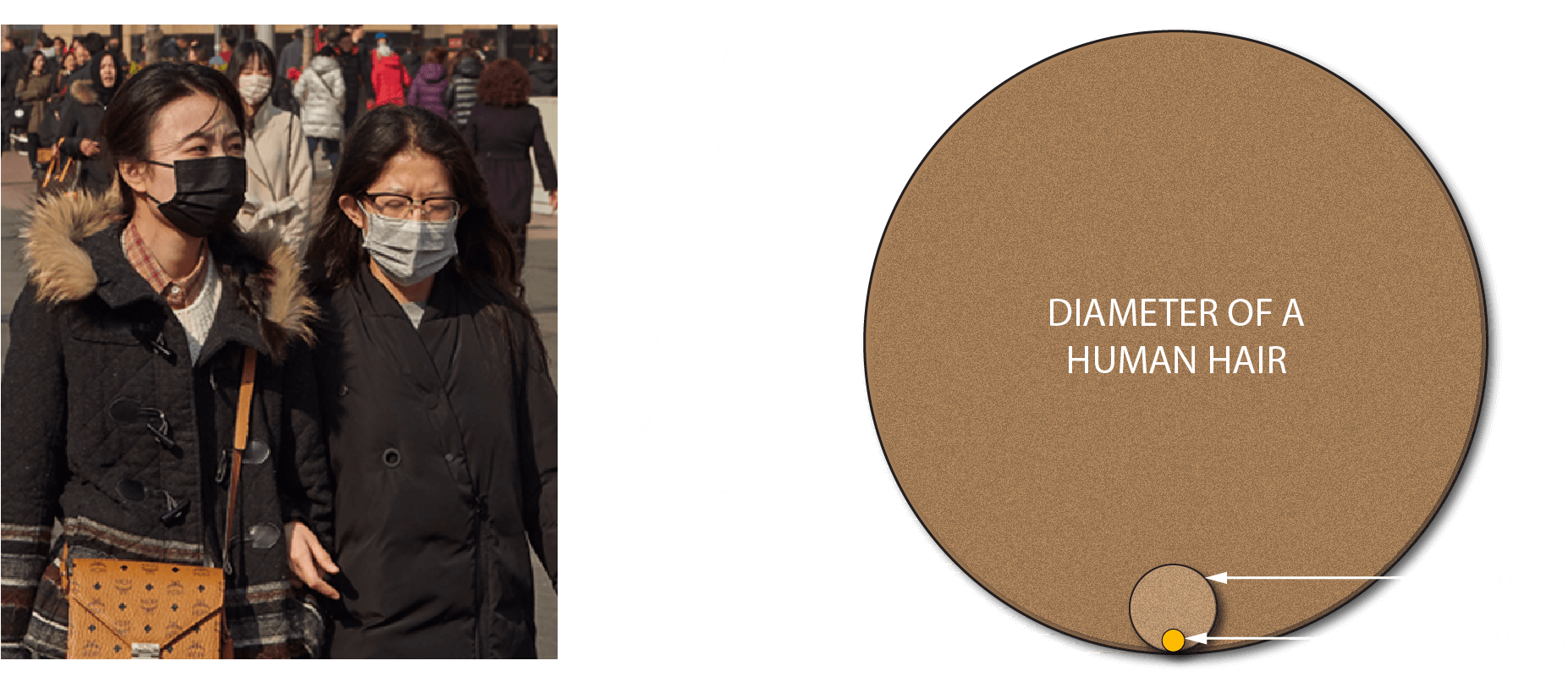
The smaller the particles, the more worrying they are. Particulate matter measuring 10 micrometers or less in diameter — a fraction of the width of a human hair — is referred to as PM10, and it is most often associated with road dust, construction activities, and other sources of coarse, airborne particles that tend to settle more quickly. Fine particulate matter 2.5 micrometers or smaller is more frequently associated with burning things — whether it’s coal in a power plant or gasoline in your car. And at that diminutive size, it can get deep into the lungs and bloodstream, and over time, research suggests, it can ravage the body.
The following short film will give you an idea:
PM2.5: A Primer
Many national governments — though by no means all — measure air pollution and set official standards, and they often use different scales and breakpoints to determine what’s healthy to breathe and what’s not. In communicating that information to the public, one common approach is to create an index combining measurements for some of the most worrying pollutants, including those mentioned above. Some indexes aggregate and average these pollutants over a specific time period — say 24 hours, or a year — to produce an overall air quality “score.” Others indicate a score based on the riskiest pollutant at a given time — and very often that is PM2.5. Many indexes use colors to make it easier for citizens to understand the overall quality of outside air, and to issue advisories when it is considered unsafe. In the chart below, the upper band shows a commonly used scoring system for air quality. A score below 50 is considered good — and green. Scores above 400 are downright dangerous.
The bottom scale shows the U.S. Environmental Protection Agency’s current benchmarks specifically for PM2.5, which is measured in micrograms per cubic meter of air — sometimes rendered as µg/m³. The higher the mass of fine particulates in the air, the more dangerous it is to breathe. The very narrow range for what’s acceptable here reflects PM2.5’s potency as a killer.

The 2018 “State of Global Air” report — a collaboration between the research nonprofit Health Effects Institute in Boston and the Institute for Health Metrics and Evaluation at the University of Washington in Seattle — makes clear the impacts of fine particulate pollution. “PM2.5 was responsible for a substantially larger number of attributable deaths than other more well-known risk factors (such as alcohol use … or high sodium intake),” the report noted, “and for an equivalent number of attributable deaths as high cholesterol and high body mass index.”
An ancillary problem, particularly in the developing world, is indoor air pollution arising from the burning of wood, coal, and other fuels for heat and cooking. As yet, there is no networked system for measuring PM2.5 inside households, but the Boston and Seattle researchers note that “numerous individual studies indicate that household air pollution concentrations often far exceed those observed in ambient air.”
A Global Problem
Few places are entirely immune from particulate pollution, and while it’s true that rich nations enjoy comparatively cleaner air, even in the United States, thousands of unnecessary deaths — some studies have put the number as high as 200,000 — are attributed to air pollution annually. A 2017 study in The New England Journal of Medicine, for example, found “significant evidence” of adverse health impacts related to exposure to PM2.5 and ozone among American Medicare recipients — and at concentrations below current national standards. The impacts were particularly pronounced among racial minorities and lower-income people. PM2.5 exposure has even been linked to a higher risk of diabetes.
For all the science, however, rapid development in many lower- and middle-income countries is outpacing the capacity, or the will, of regulators to create and enforce public health regulations that might reduce the number of pollution-related deaths. And even in parts of the rich world, where decades-old regulations have helped to ease the burden of disease related to air pollution, political forces are conspiring to roll back vehicle emissions standards and other air pollution policies, suggesting that even relatively clean air cannot be taken for granted.
In the air pollution heat map below, researchers and developers at AirVisual, a project of the Switzerland-based air pollution mitigation firm IQAir, use billions of bits of data — culled from official, government-run monitoring stations, the company’s own measuring devices, as well weather and satellite data — to provide a real-time model of air pollution and wind-flow for the planet. The colors correspond to the scale discussed above. Rare areas of blue over land represent the most pollution-free air — under 2 micrograms per cubic meter of PM2.5.
Click and drag the map to find your location, or scroll to zoom in and out.
In many places, winters are particularly bad for air quality, as warmer air in the upper atmosphere traps ambient pollution near the earth’s surface. Above, a mix of desert dust and human-caused pollution can often be seen hanging over large sections of the Middle East and North Africa, and a noxious band of air — tied closely to industry and car exhaust — is often visible stretching across great swaths of India, China, and parts of Southeast Asia. Meanwhile, clouds of polluted air can often be spotted lingering over parts of the American West Coast — even outside of wildfire season — as well as South America, and Europe.
On the Ground
We visited seven locations around the world that struggle with particulate pollution in various forms. The sites were selected to represent a cross-section of geography, development status, and pollution sources. Over the latter half of 2018, Undark will be publishing an overview of each location — including, where available, real-time PM2.5 data (see below), with the goal of shedding light on efforts to address the problem, and to expose where lack of resources, political will, or both, conspire to maintain the status quo — or even make matters worse.
Patna, India
Nationwide, more than a million Indians died from bad air in 2015, according to a recent Lancet study. The ancient city of Patna, in the country’s bustling northeast, is among the worst afflicted. If air quality were to improve to meet even India’s minimal safe standards, life expectancy here would increase by four years. “We cannot change the weather. We cannot change the topography,” said one Indian scientist. “[But] we can make emissions standards more stringent.”
Dhaka, Bangladesh
Ambient particulate matter ranks as the sixth leading risk factor for premature death globally. Those risks are particularly acute in Dhaka, where fine particle pollution — much of it arising from more than 1,000 brickmaking operations — is relentlessly inhaled by residents with little recourse. The industry is vital to many seasonal workers, but it also poses serious health risks to everyone living and breathing in the particulates generated by the many coal-fired stacks dotting the horizon. “The air that touches my skin feels extremely dirty,” one local student said, “so I use a scarf all the time to shield my hair and face from it.”
Southern Nigeria
Air quality monitoring is scarce in Nigeria, but air pollution is easy to find in Onitsha, where a mix of natural dust, smoke from wood-burning cook stoves, and ubiquitous trash burning conspire to foul the air — and it is hardly alone. Roughly 120 miles to the south, in Port Harcourt, a city of 1.4 million people in the heart of Nigeria’s oil-producing region, decrepit refineries and illicit oil processing operations emit hazardous particulate pollution. And in Lagos, the nation’s former capital and a sprawling metropolis of approximately 20 million people, aging buses, cars, and trucks — fueled by high-sulfur diesel and gasoline — clog the roadways and, very often, residents’ lungs.
Shijiazhuang, China
Fine particulate pollution remains a deadly and persistent threat in many areas of China, and in April, a group of four dozen Chinese doctors and researchers confirmed what millions of modern Chinese citizens already knew: Just like smoking, long-term exposure to high concentrations of PM2.5 pollution significantly increases the risk of lung disease — even among people who never smoked. That leaves the Asian juggernaut facing excruciating either-or choices as it tries to balance economic growth with the need to clean up its spectacularly dirty air. China’s leadership is now working diligently to navigate the myriad trade-offs — sometimes with a brutal efficiency.
San Joaquin Valley, California
PM2.5, says John Bachmann, a former EPA official who helped develop the first national air quality standards for fine particles “appears to be the biggest source of air pollution-related health effects in the world.” That’s not news to residents of California’s San Joaquin Valley. The American Lung Association attributes as many as 1,300 premature deaths each year to the noxious air here — alongside countless emergency room visits, lost days of school and work, and other public health impacts that cost the San Joaquin Valley as much as $11 billion each year. The problem is especially acute for the one in six children in the valley who the organization estimates now suffers from asthma.
Coyhaique, Chile

The southern Chilean city of Coyhaique sees annual average PM2.5 concentrations of about 64 micrograms per cubic meter, well above global standards considered safe. At certain times of the year, levels can double, or even triple. And like the nation’s capital, Santiago, which also sees dangerous levels of air pollution, geography is part of its fate. Situated in natural basins surrounded by mountains, atmospheric inversions during the winter months conspire to keep smog and other air pollution pressed close to the ground. But where the noxious air in Santiago is attributable to a variety of factors, traffic and industry among them, the primary culprit in Coyhaique is simple: wood heating.
Macedonia
Macedonia emerged from the breakup of Yugoslavia with an economy dominated by mining and construction, among other industries, and the largely unregulated, communist-era infrastructure that came with it. Eager to join Europe, the country’s ambitions have been hampered by Greece, which for years has blocked Macedonia’s accession to both the European Union and NATO over its own claim to the regional name “Macedonia.” A deal struck in late 2018 would rechristen the country as “The Republic of North Macedonia,” though the pending change, approved by parliament, continues to divide the country — and to distract, critics argue, from badly needed reforms to Macedonia’s infrastructure and environmental laws.
READ THE COMPLETE SERIES:
India, Bangladesh, China, Nigeria, Chile, United States, Macedonia


